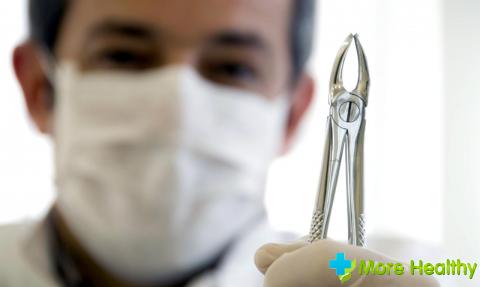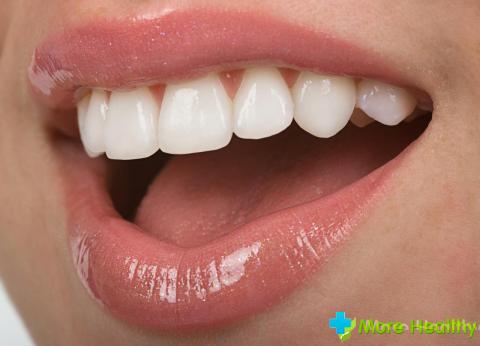Almost all procedures performed by a dentist, to a certain extent, violate the integrity of the tissues of the oral cavity. Swelling of the cheek after the removal of a wisdom tooth is one of the most common ailments that almost all patients face. In order to save yourself from discomfort and restore the affected tissues, you should know about the causes of the appearance of the tumor, as well as ways to eliminate it.
Content:
Causes of swelling of the cheek
After a dental operation aimed at removing a wisdom tooth, most patients experience unpleasant symptoms. In addition to pain and swelling of the cheeks, body temperature may also rise, sensitivity to irritants will appear, and sometimes bleeding. The appearance of these symptoms is associated with damage to the soft tissues of the oral cavity, which is produced during tooth extraction.
In general, swelling and pain after dental surgery is normal. In most cases, all unpleasant symptoms disappear without special assistance within a short period of time after the procedure. In rare cases, they may last longer, but they pass by the next day.
The patient has no cause for concern if the cheek is not swollen much, and the swelling does not increase in size. In addition, it is necessary to pay attention to body temperature. The absence of bad breath 1-2 days after visiting the dentist also indicates the absence of a health hazard.
A serious cause for concern can be pain and swelling that lasts more than a day after surgery.
Causes of swelling:
- Inflammation. As a rule, the need to get rid of a wisdom tooth arises if the patient has severe pain in this tooth. Pain indicates the development of the inflammatory process. Further removal of the affected tooth provokes a complication of this pathology.
- . During the operation, the place of removal is carefully treated with antiseptic agents. However, in some cases, this may not be enough, as a result of which an infection enters the tissues, which provokes inflammation, and swelling of the gums and cheeks.
- Complicated operation. Removing wisdom teeth can be quite a complicated process due to their composition and location. There are varieties of surgery when the dentist has to make a lot of effort in order to remove the tooth. In this case, swelling of the cheek is a kind of response of the body to a serious intervention.
- Abscess. Under the condition of a long absence of treatment, a purulent formation may appear in the patient at the site of a swollen tooth or on the gum. In such situations, the dentist makes a special incision, which is needed in order to let the pus out of the body. Because of this, a slight swelling of the gums may occur, which extends to the cheek.
- . People who suffer from disorders of the cardiovascular system often have difficulties during dental procedures. Swelling of the cheeks may occur due to increased pressure. In addition, such people often experience prolonged bleeding.

- . Tooth extractions are performed under local anesthesia. In people with allergies, the injection of an anesthetic drug can provoke a reaction in the body in the form of edema. Before the procedure, it is recommended to consult a dentist to make sure that the medicines used do not contain substances that can provoke an allergic reaction.
There are many reasons why cheek swelling can occur after a wisdom tooth has been pulled out. Most often, the cause of such an arc is surgical intervention, however, in certain cases, edema may indicate postoperative complications.
How to eliminate cheek swelling
If unpleasant symptoms occur, many people are interested in what to do if the cheek is swollen after the removal of a wisdom tooth. There are many treatment options for this disease. In the absence of other signs of complications, you can get rid of edema without the help of specialists.
Ways to eliminate swelling:
- . This treatment option is the most affordable and simple. It is recommended to apply cold compresses, since the low temperature helps to stop bleeding, eliminates pain, and significantly reduces inflammation. The procedure should be carried out 3-4 times a day, and their duration should be at least 20 minutes.
- Medications. If the swelling of the cheek was caused by the patient's high blood pressure, it is recommended to take vasodilators. This allows you to reduce pressure if it increased during the operation, and prevent possible complications.
- Refusal of physical activity. After the procedure for removing a tooth, the cheek may be due to the fact that the patient is physically active. It is not recommended to play sports, perform difficult physical work. On the contrary, it is best to rest after the procedure.

- Rinsing. To eliminate swelling of the gums and cheeks, as well as to prevent inflammation, it is recommended to rinse. Such procedures should be carried out 2-3 days after a visit to the dentist. It is very important to remember that you should not drink or eat any food for 4 hours after the operation.
- Sedatives. The stressful situation experienced by a person at the time of the appointment with the dentist can negatively affect the state of health in the future. A few hours after the operation, a sedative should be taken in order to reduce the emotional burden on the body.
In general, there are many ways to eliminate swelling after pulling out a wisdom tooth. Using the recommendations presented, you can significantly reduce the likelihood of complications.
In what cases you need to see a doctor
Despite the fact that the appearance of cheek swelling after surgery is a natural phenomenon, in certain situations it may be necessary to seek the help of a dentist. We are talking about cases of complications that may occur after the removal of a wisdom tooth.
When to see a doctor:
- Increase . If a few days after the operation, the swelling of the cheek continues to increase in the patient, medical attention should be sought. The growth of edema indicates the development of inflammation, which can lead to its spread to the infraorbital region.
- Strong pain. In case of severe pain that does not decrease, or intensifies, you should visit a doctor. A serious cause for concern is the pain, which does not become weaker for 3-4 days after tooth extraction.
- Deterioration. If after the operation there is an increase in temperature, weakness, lack of appetite, you should seek the help of doctors. Such symptoms may indicate an infectious infection, which in turn leads to the development of purulent inflammation.

- Difficulties in eating. During the two days of the procedure, if the cheek is swollen, the patient may have difficulty chewing and swallowing. This is a sign that swelling affects the degree of tissue tension, resulting in muscle spasm.
- "Dry Hole" This is the name of the condition in which the patient does not have a blood clot at the site of the extracted tooth. It can fall out on its own, or be washed out when rinsing the mouth. This violation leads to inflammation of the bone tissue, which is accompanied by severe pain and swelling of the cheek. If you have these symptoms, you should contact your dentist to place a special preparation in the hole.
There are a number of cases in which you must definitely contact a specialist. As a rule, we are talking about complications caused by a violation of the integrity of tissues, which is expressed in the development of the inflammatory process.
While watching the video you will learn about wisdom teeth.
In general, cheek swelling after wisdom tooth removal is a natural phenomenon that often goes away on its own. However, prolonged swelling, as well as the presence of severe pain and high temperature, indicate complications, which is why the patient is best to contact.





